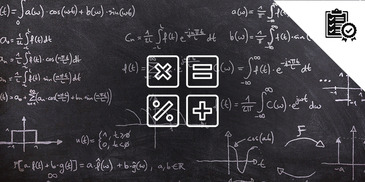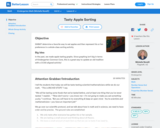
SWBAT use a ten frame to build and identify the numbers 10 through 15.
- Subject:
- Mathematics
- Material Type:
- Lesson Plan
- Provider:
- BetterLesson
- Date Added:
- 12/01/2022


SWBAT use a ten frame to build and identify the numbers 10 through 15.

Students will have fun making circles out of chenille stems (pipe cleaners) and placing small circular pony beads while they practice drawing and identifying circles.

Students in kindergarten are required to match quantities with corresponding numerals from 0 to 20. It is best to teach numbers to quantities in "chunks." This lesson focuses on reinforcing counting quantities 0 to 9.

Students will be able to identify 2-dimensional shapes and tell the number of vertices and sides.

Understand the measurement process and the need for standard units.

SWBAT practice the rote counting sequence both forwards and backwards, from 1-30. SWBAT use a number line as a tool for counting. SWBAT count sets of objects up to 20.

Determining a good statistical question is the foundation of statistics.

A lesson focused on subtracting mixed numbers using fraction strips and an interactive fraction pad.

When subtracting ten from a 2 digit number, students should be able to compute the answer as fluently and comfortably as do when they add ten to a 2 digit number.

Students will be able to create their own number stories and represent them using one of the methods we have learned in this unit.

Students will be able to create their own number stories and represent them using one of the methods we have learned in this unit.

Students will be able to create their own number stories and represent them using one of the methods we have learned in this unit.

Subtraction problems can involve shapes, attributes and perimeter.

In December, it's fun to decorate for the holidays. This lesson includes 2D shape and counting practice!

Understanding multiple attributes is an important mathematical process. The students use their knowledge of Venn Diagrams in this lesson to gain more knowledge about this concept.

This lesson provides an overview of squares, along with a chance to create actual squares and an opportunity to illustrate objects shaped like squares.

Today we become Gallup Poll central as students take a set of collected data and create a visual representation using the skills that have been taught over the past few lessons.

Playing a game for the order of operations engages students in math fact review and builds fluency.

In the past, we made apple tasting graphs. Since graphing isn't big in terms of Kindergarten Common Core, this is a great way to update an old tradition with a CCSS-aligned activity!

Students oftentimes struggle with comparison problems since there is no "action" in the problem (i.e.: nothing is getting taken away or added). In this lesson, students practice strategies for solving comparison problems.